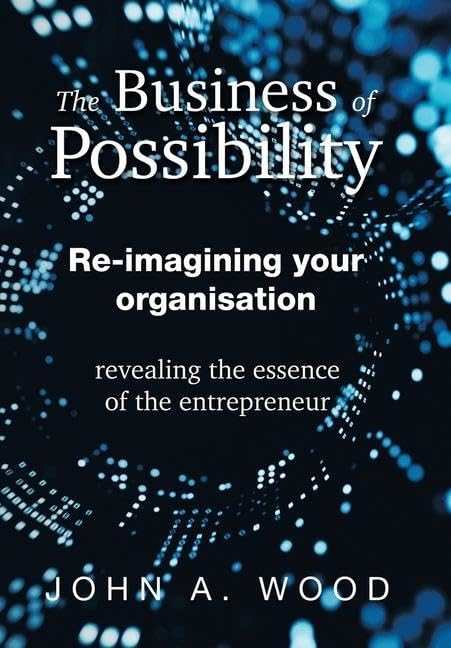The Business of Possibility
Re-imagining Your Organisation: Revealing the Essence of the Entrepreneur
The Business of Possibility is a high-minded leadership guide that suggests a revolutionary approach to running a business.
John A. Wood’s succinct, philosophical leadership guidebook The Business of Possibility looks to organizational foundations to understand why some businesses fail and others succeed.
This book encourages business leaders to adopt a possibility mindset, with the understanding that possibility “is our original state of awareness … unshackled from … habitual, memory-based, conditioned thinking” and that “possibility is the realm of creativity, innovation and the solutions.” It applies this perspective at the individual level, at the level of directing whole leadership teams, and within the context of business dealings. It treats its proposed paradigm shift as a potentially transformational one, with examples of its implications for leading businesses.
The book’s approach is systematic, with chapters divided into clear sections with direct subheadings for ease of navigation. The headier work is complemented by real-life examples, alongside rigorous recommendations for self-interrogation, organizational introspection, and suggestions for further development. There are keen thought exercises, as with comparing procedures (or what works, such as minimizing costs and avoiding waste) to values (or what matters, such as creativity, good pay, and working conditions). And the book includes case studies as models, as in its chapter about implementing possibility mindsets, which begins with a study of Wood’s son’s business. Still, despite the book’s wealth of examples, clear articulations of what the possibility mindset entails are often elusive; the language is abstract and conceptual outside of the case studies themselves.
Indeed, because the book’s underlying aim is to improve the world, and its particular approach involves encouraging business leaders to take a role in doing so, it becomes less about specific guidance than about defending its mindset-shift theory. There are references to business archetypes, conscious leadership, and vertical inquiries; there are encouragements to take the well-being of one’s employees into account and to think about the well-being of those who buy a business’s products or use its services, with gestures toward communities at large. This work is often vague, though, limited to suggesting broad approaches that may lead to positive ends. Recommendations for implementation are somewhat restricted to the book’s appendixes, which include a model for a business workshop. Still, the book’s challenge to existing business models is provocative, and its perspective on leadership approaches is piquing as well.
The Business of Possibility is a high-minded leadership guide that suggests a revolutionary approach to running a business for the benefit of all who are impacted by it, from entrepreneurs themselves down to employees and consumers.
Reviewed by
Sarah Frideswide
Disclosure: This article is not an endorsement, but a review. The publisher of this book provided free copies of the book and paid a small fee to have their book reviewed by a professional reviewer. Foreword Reviews and Clarion Reviews make no guarantee that the publisher will receive a positive review. Foreword Magazine, Inc. is disclosing this in accordance with the Federal Trade Commission’s 16 CFR, Part 255.

